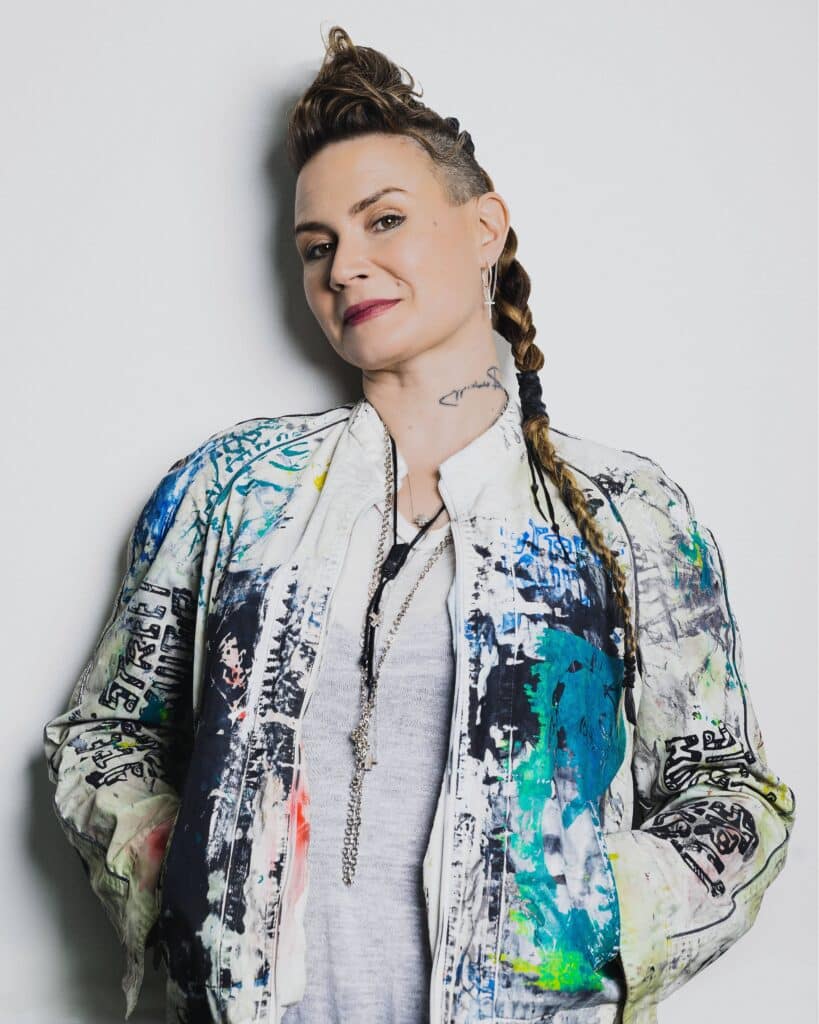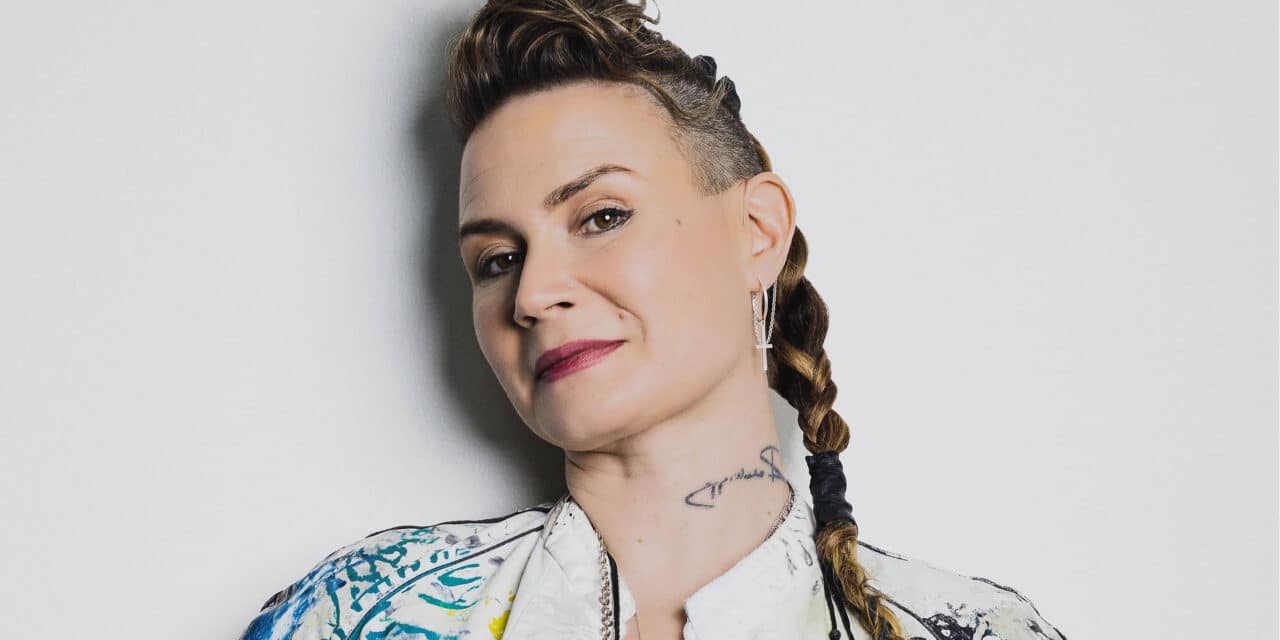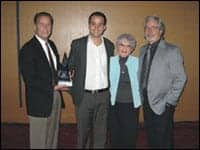Summary:
Deafmetal, a pioneering brand turning hearing instruments into stylish, functional jewelry, is being honored at London’s V&A Museum for its role in redefining hearing loss as a source of pride and self-expression.
Key Takeaways:
- Design Meets Empowerment: Deafmetal, founded by designer Jenni Ahtiainen, transforms hearing aids into bold fashion accessories that celebrate, rather than conceal, hearing loss.
- Global Impact and Recognition: From a viral design to a global movement, Deafmetal is now featured in the V&A’s Design and Disability exhibition, marking a cultural shift in how hearing loss is perceived.
- Function With Style: Beyond aesthetics, Deafmetal’s designs can enhance device security and user confidence—addressing stigma, improving retention, and inspiring users to embrace hearing aids earlier.
What if hearing instruments weren’t something to hide, but something to celebrate? BIHIMA shares how Deafmetal is on a mission to prove just that, and now the company’s creative designs are about to go on display at the V&A Museum in London.
For many people, hearing instruments are a lifeline—but they can also be a reminder of the stigma that exists in society. Devices designed to help us connect are too often hidden away, designed for function rather than style.
Deafmetal is changing that narrative. Founded by Finnish designer Jenni Ahtiainen, the brand transforms hearing instruments into bold, beautiful jewelry—known as Deafmetals—helping wearers reclaim their identity and feel proud of their hearing loss journey.
Now, Deafmetal is being honored on one of the world’s most prestigious stages. The Victoria and Albert Museum in London has chosen the brand for its new exhibition Design and Disability, which celebrates the radical contributions of disabled, deaf and neurodiverse creatives to global design culture. More than a showcase, this is a moment of cultural recognition: Deafmetal’s inclusion marks a major milestone in how we view hearing loss, technology, and self-expression.
For Ahtiainen and her team—all of whom are either hearing instrument users or work closely with hearing loss—this moment is deeply personal. “I didn’t want to hide my hearing aids,” Ahtiainen explains. “I wanted to make them mine.” That ethos now has a powerful home in the V&A’s collection.
Reimagining What Hearing Instruments Can Be
Deafmetal began with a simple act of rebellion; or, as Ahtiainen puts it, an instinct for “tuning things up.” When she was first fitted with hearing instruments, the color didn’t fit with her personal style but she wasn’t able to cover them with her hair. As a lifelong jewelry designer, she took her new devices to her studio and combined thin leather, chain, an earring and tiny hand-stitched details to make a cover that felt like part of her.
“It started with a piece I made for myself,” she says. “I didn’t realize I had created something entirely new until I shared a photo online and it went viral. Then the Finnish Hearing Association called and said, ‘Can we do something together?’”

From there, Deafmetal grew into something much bigger than accessories. It became a movement—one rooted in self-expression, behavior change, and a deeper conversation about how society views hearing loss.
But there’s practicality, too. Deafmetal pieces aren’t just decorative. They also serve a protective function, securing devices with earrings, rings, or holsters so they don’t fall out. This feature is especially valued by athletes, older users (whose ears change shape over time), and anyone who’s experienced the panic of losing a hearing instrument mid-walk or mid-dog-chase.
“We’re launching a new range specifically for men and active users,” Ahtiainen shares. “It’s not just about aesthetics. It’s about function, safety, and confidence.”
Challenging Stigma, One Accessory at a Time
Deafmetal’s impact isn’t only visible in design museums. It’s showing up in people’s lives: in confidence, in creativity, and in ownership of hearing loss. In a recent survey of 147 hearing device users, 92.4% said they felt more confident wearing embellishments on their hearing instruments, and 71.3% reported worrying less about losing their devices thanks to Deafmetal’s secure styling.
The company has customers all over the world, demonstrating the influence of Deafmetals in empowering people, and the customer stories speak volumes. One wearer shared: “I look forward to wearing my hearing aids every day. I’ve received countless compliments. So much interest in my ‘so interesting’ earrings.”
Another said: “When I found Deafmetal, I decided I would only buy behind-the-ear hearing aids—just so I could bedazzle them.”
For some, it’s even helped kick-start their hearing journey.
“Deafmetal and the ability to wear hearing aids in style motivated me to start the hearing aid trial,” said one user, “Without Jenni’s story, I would have waited another year.”
A Bridge Between Fashion, Health, and Empowerment
Although stigma around hearing loss still exists, attitudes are changing. There is greater visibility in sport, fashion, and entertainment than ever before of those living with hearing loss and deafness. The hearing instrument industry is evolving too, and Deafmetal is helping drive that change—Ahtiainen has worked with some of the UK’s leading manufacturers.
Many audiologists have embraced the products as tools for improving confidence, retention, and overall device usage. “Their job is to help people actually wear their hearing aids,” Ahtiainen explains. “Our Deafmetals support that in a way that feels human and joyful.”
It’s a mission that aligns closely with The British and Irish Hearing Instrument Manufacturers Association (BIHIMA), which proudly supports Deafmetal’s inclusion in the Design and Disability exhibition.
“Too many people still avoid or delay wearing hearing instruments because of stigma,” says BIHIMA Chairman Paul Surridge. “Design-led solutions like Deafmetal are vital. They don’t just improve the user experience—they challenge the outdated attitudes that surround hearing loss.”
The data backs it up. According to the last EuroTrak UK survey, nearly a quarter of people with hearing loss still wait more than five years before seeking help, and stigma remains a key barrier. Our 2024/25 audiologist survey also revealed concerns around hearing instrument uptake, with professionals calling for more tools to support patient confidence and engagement.
From Viral Moment to Museum Milestone
What began as a personal project has become a global symbol of possibility. Today, Deafmetal designs are worn in over 30 countries. Now, they’ve earned a place in the world’s largest museum of design history.
The Design and Disability exhibition at the V&A runs through 2025, showcasing the creativity and ingenuity of those too often excluded from the design world. In recognizing Deafmetal, the museum isn’t just displaying hearing instrument jewelry; it’s celebrating a new way of seeing hearing loss.
And for Ahtiainen, it’s a moment of reflection: “After working in the fashion and music industries as a professional designer for many years, I have never felt more passionate about my designs, nor have I ever felt that my creations are as important to the world, as I do now.”
Source: The British and Irish Hearing Instrument Manufacturers Association (BIHIMA)





